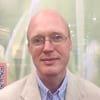Potassium diformate for catfish
Potassium diformate (KDF) promotes growth and health performance of striped catfish (Pangasius hypophthalmus) in commercial fishponds in the Mekong Delta, Vietnam
Month | Weight gain (g) | Mortality (%) | FCR | FPI** | ||||||||
Control | KDF | Δ (%) | Control | KDF | Δ (%) | Control | KDF | Δ (%) | Control | KDF | Δ (%) | |
1 | 15.4 | 19.8 | 28.3 | 1.7 | 10.9 | 534.8 | 1.1 | 0.4 | -66.7 | 143.8 | 501.8 | 248.9 |
2 | 35.9 | 54.1 | 50.8 | 15.5 | 1.1 | -92.1 | 0.5 | 0.9 | 65.1 | 582.2 | 622.7 | 6.9 |
3 | 81.5 | 116.7 | 43.3 | 0.8 | 0.8 | -2.1 | 1.2 | 0.9 | -21.7 | 694.2 | 1270.7 | 83.0 |
4 | 173.0 | 194.4 | 12.4 | 0.3 | 0.5 | 62.2 | 1.1 | 1.1 | 5.4 | 1583.8 | 1685.3 | 6.4 |
5 | 91.3 | 164.0 | 79.7 | 0.5 | 0.3 | -28.8 | 2.1 | 1.4 | -34.0 | 435.1 | 1186.7 | 172.8 |
6 | 213.1 | 148.7 | -30.2 | 1.0 | 0.8 | -22.2 | 0.8 | 1.2 | 50.8 | 2617.5 | 1214.0 | -53.6 |
7 | 117.3 | 147.9 | 26.1 | 0.3 | 0.5 | 36.6 | 2.1 | 2.0 | -4.7 | 544.9 | 720.1 | 32.2 |
8 | 114.0 | 186.3 | 63.4 | 0.3 | 0.4 | 14.6 | 1.2 | 1.4 | 16.5 | 951.9 | 1334.2 | 40.2 |
Final | 826.0 | 1012.0 | 22.5 | 20.5 | 15.3 | 25.4 | 1.3 | 1.2 | -7.7 | 5051 | 7143 | 41.4 |
Figure 1: Body Mass Development of striped catfish (Pangasius hypophthalmus) fed with or without 0.2% KDF inclusion during grow-out culture in intensive ponds, Mekong Delta, Vietnam (n=100)



Dear Mr. Alshawi,
thank you for your comment! True, the conclusion for the results from the pangasius trial with potassium diformate are only a theoretical resume - since more in-depth data are still missing. But the results on the growth performance of the fish speak for themselve. And, data from tilapia or salmon proved this "speculation", since several authors fround improved disgestibility parameters of protein, fat, amino acids and minerals - thus showing a direct impact on the gastro-intestinal tract. These data are for instance available from the Fish Feeding and Nutrition conferences ISFNF 2008 and ISFNF 2010. Especially the ISFNF 2010 conference had at least 5 publications on the use of diformates in fish. If you want to look for additives in fish nutrition in general, than still, the conference proceedings from the ISFNF will be a good start.
Dear Mr. Ediwarman,
Interesting article about Potassium diformate for catfish. Due to the improved fish productivity, from growth and feed efficiency, there is a clear beneficial impact on profitablitiy once potassium diformate is included. Data from Bogor University from 2005 in tilapia showed a significant impact of potassium diformate on the fish. If these data are used for a economic analysis, than one can assume that the use of dietary potassium diformate, at a dosage of 0.2%, gives a return of investment of 1 : 3.
Dear Dr., good article about Potassium diformate for catfish. As you mentioned in your discussion that the reason for growth performance of catfish was the effects of PDF on the intestine and counteracts of gram-negative bacteria which you reached it to 90% of improving their efficiencies without any field or lab. works. It is only a theoretical resume .Never the less, it is a good search for improving fish growth even if the cost of KDF is expensive . So would you please recommend any articles dealing with supplementary additives to fish feeds stimulate growth? Thank you


PRICHEMIN MIX
I´m very interested article about Potassium diformate (KDF) in health performance of striped catfish, but how at the price feed? Could you please give me more information?
Thank you.








